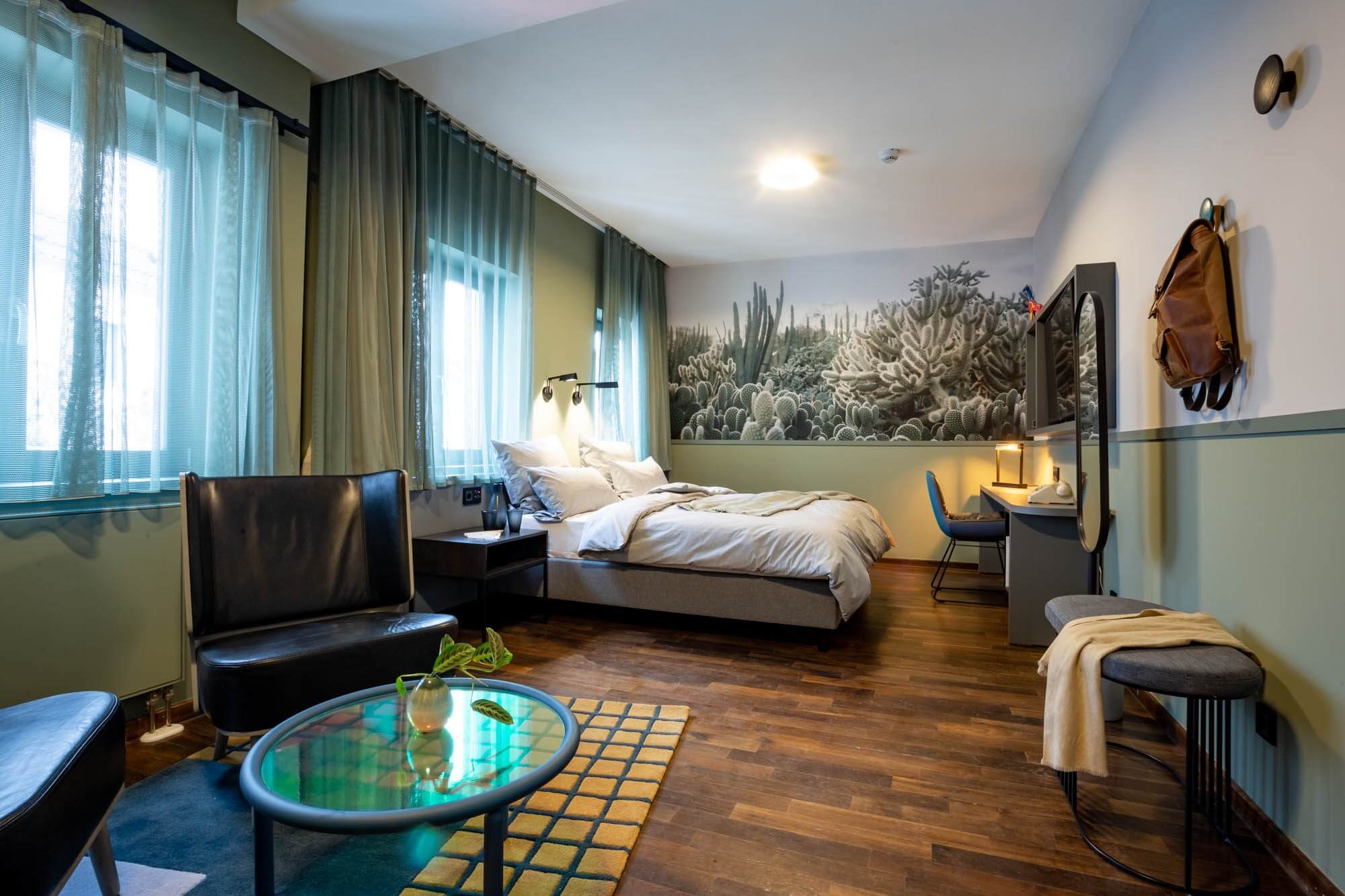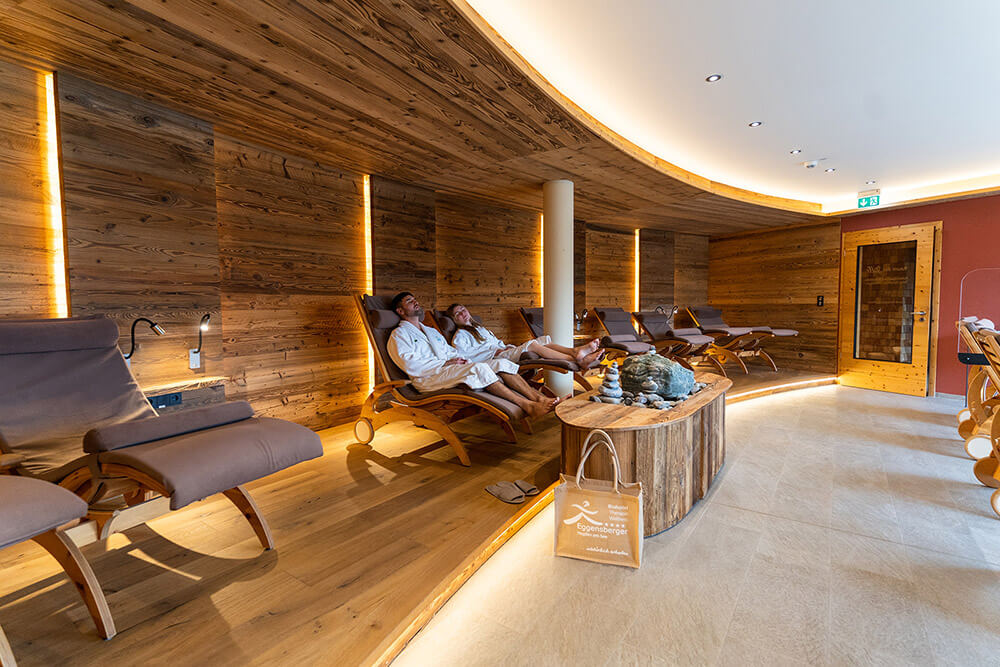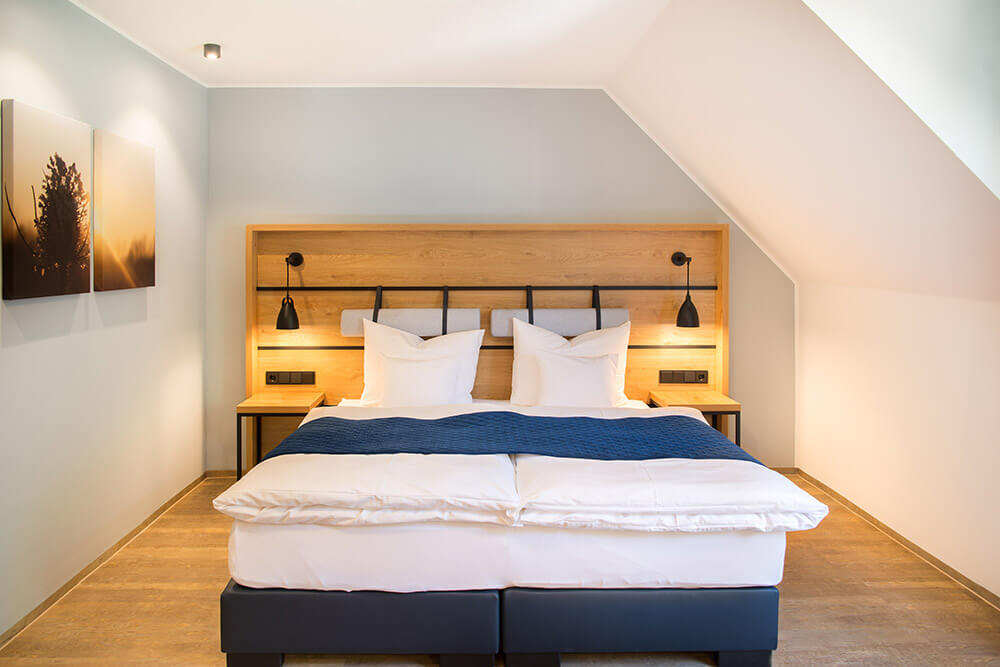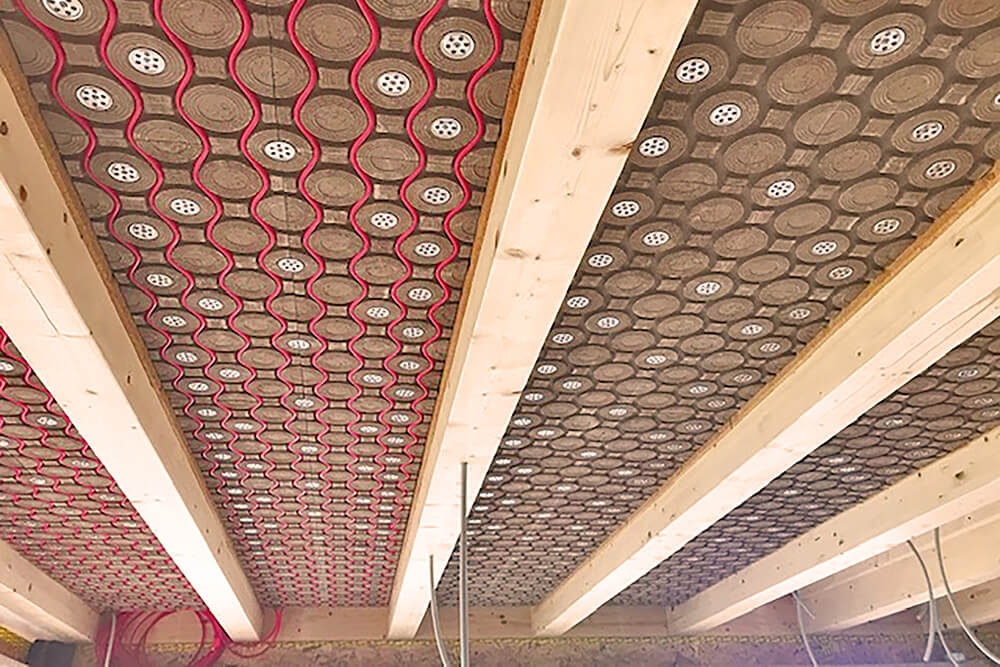HOW TO COOL HOTELS ECONOMICALLY WITH A HIGH ROOM COMFORT
In hotels, fan coils as duct units in combination with central ventilation systems are used almost exclusively for the climatization of guest rooms worldwide. This type of climatization is responsive and regulates humidity, even in very humid and hot regions. However, it also comes with significant disadvantages such as very high energy consumption and high investment costs. In addition, this type of climatization is not quiet, meaning that drafts and fan noise are well known.
Cost trap fan coils
In order to achieve the desired room temperatures, an air change rate of at least 2 times per hour is required in Central Europe, and around 3 times per hour in more humid and hotter regions (e.g. Singapore), since room cooling is achieved 100% through air, that is via convection. Furthermore, the cooling coil of fan coils is relatively small, so system temperatures for cooling (≈ 7°C) need to be correspondingly low. The very high required air exchange rate and the low coil temperature excessively dry out the room air and cause an enormous effort for dehumidification (latent energy) of at least 50%. This means: when cooling the room, at least 50% of the generated energy is lost due to excessive dehumidification!
In the room the high air exchange rate and the low supply air temperature of ≈ 7°C create unpleasant drafts and, at times, noise from the fan coil’s fan.
Disadvantages of fan coils
The chiller must generate at least twice as much output as is actually needed for room cooling, since at least 50% of the total energy is lost through condensate removal. Consequently, the piping network must be dimensioned accordingly large and insulated according to refrigeration engineering standards. A chiller that is at least twice as large also requires correspondingly more refrigerant.
Since fan coils are generally used as duct units in combination with central ventilation systems, these must also be dimensioned accordingly large. The ventilation system, like the fan coils, must ensure a 2- to 3-fold air exchange rate in the room. Consequently, the ventilation center must be large enough.
In order to permanently meet the cooling demand of the rooms, fan coil filters must be changed regularly and wear parts replaced, which drives up maintenance and operating costs.
Despite the uneconomical and uncomfortable hotel climatization, fan coils are still the first choice, as ceiling cooling systems—the only alternative—do not sufficiently regulate room humidity, are too sluggish, and do not achieve the desired room temperatures.
The Solution: Natural Climate Ceilings from ArgillaTherm
The natural climate ceilings take over room cooling at a similar speed to fan coils. This is thanks to the system design, a special control concept, and the highly conductive carrier material of the Argillatherm HUMID modules. You can find more information here.
Humidity regulation during cooling occurs naturally in Central Europe, without the need for dehumidification efforts. A moisture buffer of over 2 liters per square meter of module surface is available for this purpose. This drastically reduces energy consumption and prevents the rooms from becoming excessively dry.
Since the cooling output is generated independently of the air volume flow, air exchange rates can be reduced by around 70%. The key control factor is the sufficient removal of CO₂ from the rooms, rather than the usual required air volume flow for room cooling. In Central Europe, this makes central ventilation systems unnecessary, as pre-drying of outside air is not required.
In more humid and hotter regions (e.g. Singapore), the natural climate ceilings are combined with central ventilation systems that pre-dry the outside air to values similar to those in Central Europe. Compared to fan coils with central ventilation systems, this also saves even more operating costs, just like in Central Europe. The rule of thumb is: the more humid and hotter the region, the more economical the operation with the Argillatherm Natural Climate Ceiling becomes!
Learn more in this free online course

Speaker: Christian Schneider, sales partner ArgillaTherm
„Natural climate system for hotels - How to cool a hotel without fan coil and save 50% energy!“
Duration: 40 minutes
Language: English
Why are fan coils the most used system and why is it the best solutions for hotels until today?
What is a real alternative for cooling hotel rooms?
How can you save 50% energy while still satisfying customers?
All these questions and more will be answered in this online course!
Properties in operation

- Suitable for use worldwide; the more humid and hotter the region, the more economical the operation.
- Overall system height of just 55 mm.
- Invisible, silent, and maintenance-free climatization.
- Minimal air volume flow required (air change rate < 1.0/h).
- Perfect indoor climate with approximately 50% relative humidity, ideal for allergy and asthma sufferers.
- Fast-responding and high-performance, on par with fan coils.
- Ideal for retrofitting or renovations.
- Around 50% lower operating costs compared to fan coils.
- Nearly CO₂-neutral in production.
Below are various hotel projects.
In the following hotel projects, fan coils combined with central ventilation systems were originally planned. The implementation was carried out after an economic comparison with the Natural Climate Ceilings from ArgillaTherm, depending on the external conditions and in combination with either central or decentralized ventilation technology.
- Natural climate ceilings with decentralized ventilation.
Hotel with 220 rooms in Germany, planning completed.
→ Total investment reduced by approximately 18 % and ongoing operating costs reduced by approximately 65 %! - Natural climate ceilings with central ventilation.
Hotel with 350 rooms in Germany, implementation completed.
→ Total investment reduced by approximately 10 % and ongoing operating costs reduced by approximately 50 %! - Natural climate ceilings with central ventilation.
Hotel with 580 rooms in Singapore, planning completed.
→ Total investment reduced by approximately 7 % and ongoing operating costs reduced by approximately 53 %, totaling around €700,000 per year (Return on Investment < 5 years)!
Upon request, we would be happy to send you the detailed calculations regarding the investment and ongoing operating costs of the projects mentioned.
Conclusion
The secure removal of humidity via the cold surface and the room cooling that is ensured independently of the air volume flow allow for a purely CO₂-controlled ventilation concept, eliminating the need for central ventilation systems in Central Europe and significantly reducing their use in more humid and hotter regions.
- The required air volume is reduced by approximately 70 %.
→ CO₂ regulation becomes the key control factor.
- The total investment is reduced by up to 20%, and operating costs by at least 50 %.
→ In the decentralized ventilation system segment, a partnership exists with the company SIEGENIA.
- Hotel air conditioning becomes nearly CO₂-neutral.
→ Significant improvement in the building’s ecological footprint, enabling special funding opportunities.
- Cooling operation
→ With a supply temperature as low as 6°C below the dew point in continuous operation, which ensures uniquely high cooling capacities and uninterrupted cooling operation.
- Use of natural climate ceilings
→ Worldwide: the more humid and hotter the regions, the more economical the operation.
- Comparison calculator for global hotel projects
→ Tool for determining ongoing operating costs.
ArgillaTherm has extensive experience in hotel installations. For example, natural climate ceilings were installed at the Holiday Inn – the niu, Pax Berlin Airport. Here, the ventilation is provided centrally.

Image source: DIE AG
We would be happy to send you our product presentation for use in hotels. Please request it by email at info@argillatherm.de.
Installation options

Full-surface ceiling covering

Partial ceiling covering

Full-surface ceiling covering with slanted ceiling

Exposed beam ceiling
System configuration
TECHNICAL DOCUMENTS
Please request system descriptions, detail drawings, data sheets, test reports and specifications via e-mail (info@argillatherm.de) or the below contact form.

